Minh Mang Tomb
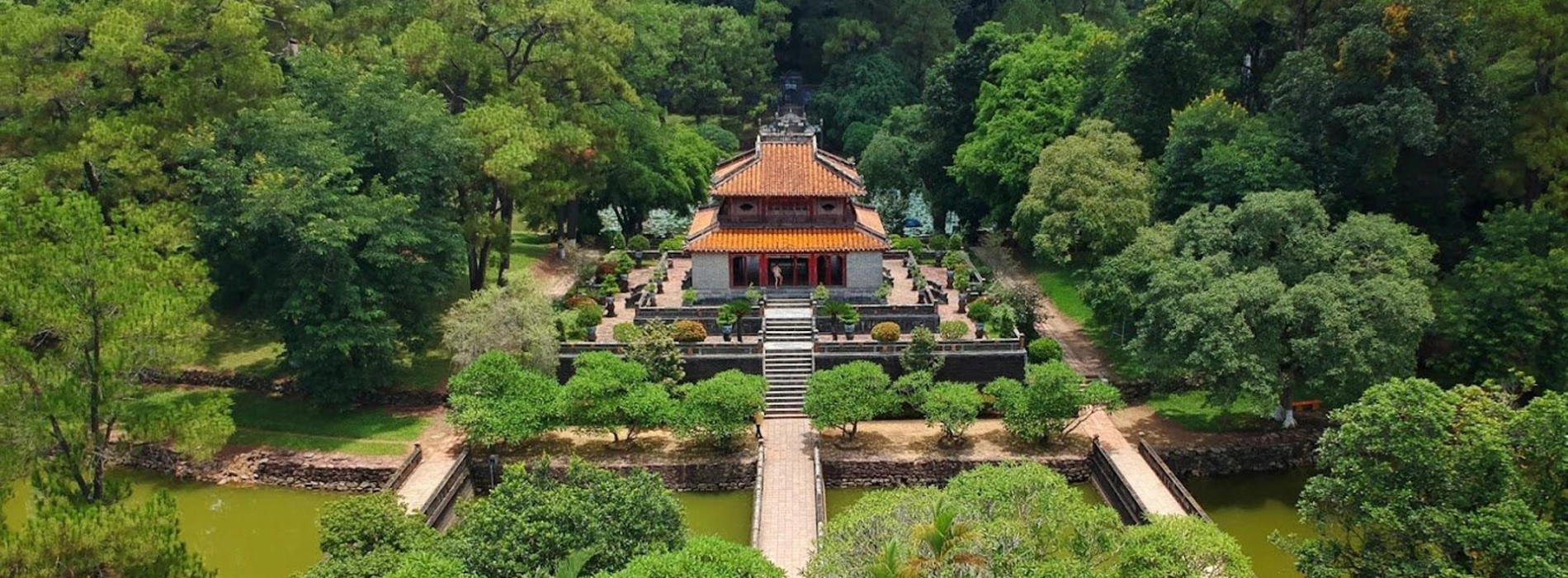
The Minh Mang Tomb, nestled in the historic city of Hue along the Perfume River, stands as a poignant testament to the legacy of Emperor Minh Mang, the second ruler of the Nguyen Dynasty in Vietnam. Constructed between 1840 and 1843, the tomb complex is a harmonious blend of traditional Vietnamese design and Confucian principles. As visitors pass through the triple-arched Dai Hong Mon gate, they enter a realm of serenity, surrounded by landscaped gardens, placid lakes, and ornate structures. Steeped in history, the tomb features numerous steles inscribed by Minh Mang himself, as well as statues, pavilions, and temples dedicated to the emperor and his empresses. The site's architectural elegance and its seamless integration with the natural surroundings make Minh Mang Tomb a cultural jewel within the UNESCO-listed Hue Monuments, drawing visitors into a contemplative journey through Vietnam's imperial past.
The history of Minh Mang Tomb is intricately woven into the tapestry of Vietnam's 19th-century history, marked by the reign of Emperor Minh Mang and the complex socio-political landscape of the time. Minh Mang ascended to the throne of the Nguyen Dynasty in 1820, succeeding his father, Emperor Gia Long, the founder of the dynasty. Minh Mang's reign was characterized by a fervent commitment to Confucian ideals, emphasizing social order, hierarchical structures, and the preservation of traditional Vietnamese values.
During this period, Vietnam faced internal challenges, including social unrest and external pressures from Western powers, particularly French missionaries. Minh Mang sought to fortify the Confucian state by implementing rigorous Confucian education, civil service examinations, and a strict adherence to Confucian social norms. His rule was marked by a determined effort to restore and reinforce traditional Vietnamese cultural and social structures.
.jpg) Minh Mang Tomb - Mausoleum Of A Great Emperor
Minh Mang Tomb - Mausoleum Of A Great Emperor
In 1840, during his lifetime, Minh Mang began the construction of his tomb, a monumental undertaking that reflected not only his personal aspirations for an impressive burial site but also his desire to leave a lasting legacy that would perpetuate Confucian principles. The chosen location along the Perfume River, with its serene landscapes, was carefully selected following principles of feng shui, combining natural elements with architectural aesthetics.
The completion of Minh Mang Tomb occurred in 1843 under the supervision of his successor, Emperor Thieu Tri. The tomb complex, featuring ceremonial gates, courtyards, pavilions, temples, and lakes, stands as a testament to the emperor's vision and the Nguyen Dynasty's commitment to cultural continuity amidst external challenges.
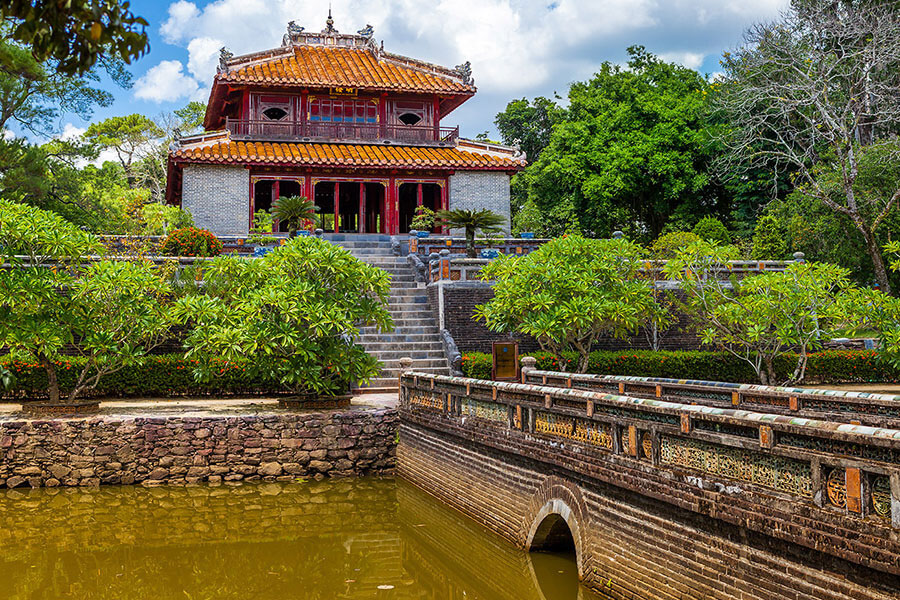
Minh Mang Tomb's historical significance extends beyond its architectural elegance. It serves as a tangible link to a pivotal period in Vietnamese history when the nation grappled with both internal reforms and external pressures. The enforcement of Confucian ideals by Minh Mang, his resistance to Western influences, and the construction of the tomb collectively contribute to the rich narrative of Vietnam's cultural resilience and identity during the 19th century. Today, Minh Mang Tomb stands as a UNESCO World Heritage Site, inviting visitors to explore its historical depths and appreciate the enduring legacy of Emperor Minh Mang.
The best time to visit Minh Mang Tomb in Hue, Vietnam, is during the dry season, which typically runs from March to August. During this period, the weather is more favorable, with lower chances of rainfall and more comfortable temperatures.
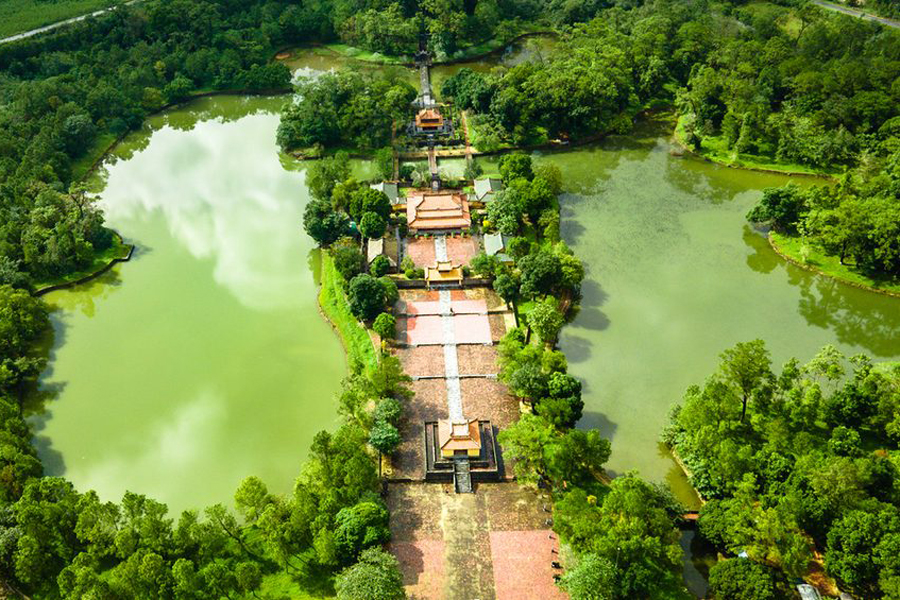 View of King Minh Mang's Mausoleum from above
View of King Minh Mang's Mausoleum from above
1. Spring (March to May): Spring is a delightful time to visit Minh Mang Tomb. The weather is mild and pleasant, with blooming flowers adding to the beauty of the landscape. Temperatures are generally in the comfortable range, making it an ideal time for exploration.
2. Early Summer (June to August): The early part of the summer season can also be a good time to visit, although temperatures tend to rise. It's advisable to visit earlier in the day or later in the afternoon to avoid the peak heat. The lush greenery during this time adds to the overall aesthetic of the site.
See more: Southern Vietnam Highlights
1. Dai Hong Mon (Main Gate): The entrance to Minh Mang Tomb, Dai Hong Mon, is a magnificent triple-arched gate with intricate designs. It's the gateway to the tomb complex, setting the stage for the impressive structures and serene landscapes within.
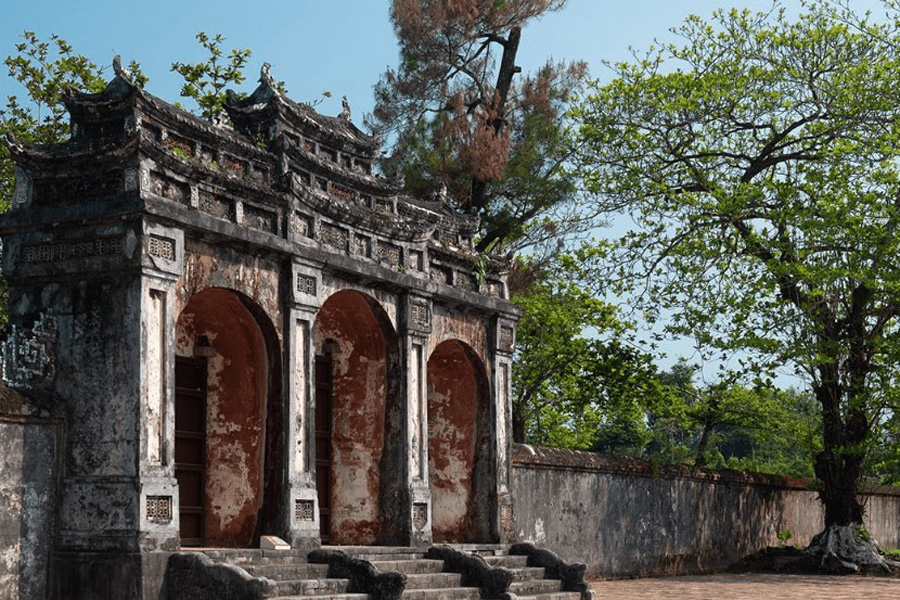
2. Minh Lau Pavilion: Positioned on a hill, Minh Lau Pavilion offers breathtaking panoramic views of the entire tomb complex and its surroundings. This spot provides a peaceful vantage point to appreciate the architectural beauty and natural scenery.

3. Hieu Lang (Stele House): Hieu Lang houses steles and plaques with inscriptions providing historical insights into Emperor Minh Mang's life and rule. It's a place where visitors can delve into the rich history and philosophy associated with Minh Mang's legacy.
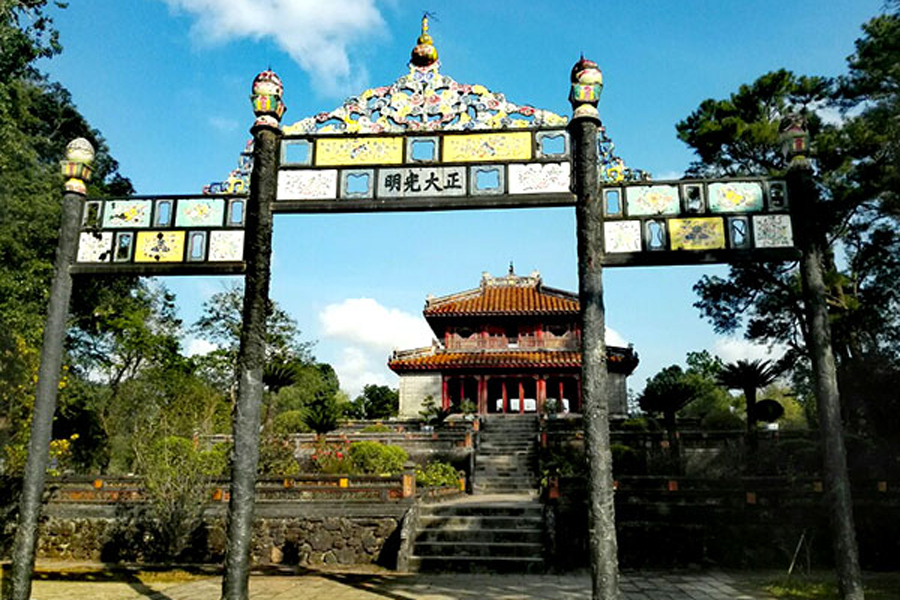
4. Tomb of Minh Mang: While visitors can't enter the tomb itself, the area surrounding Minh Mang's final resting place is beautifully landscaped. The tomb is the central focus of the entire complex and represents the emperor's lasting impact on Vietnamese history and culture.
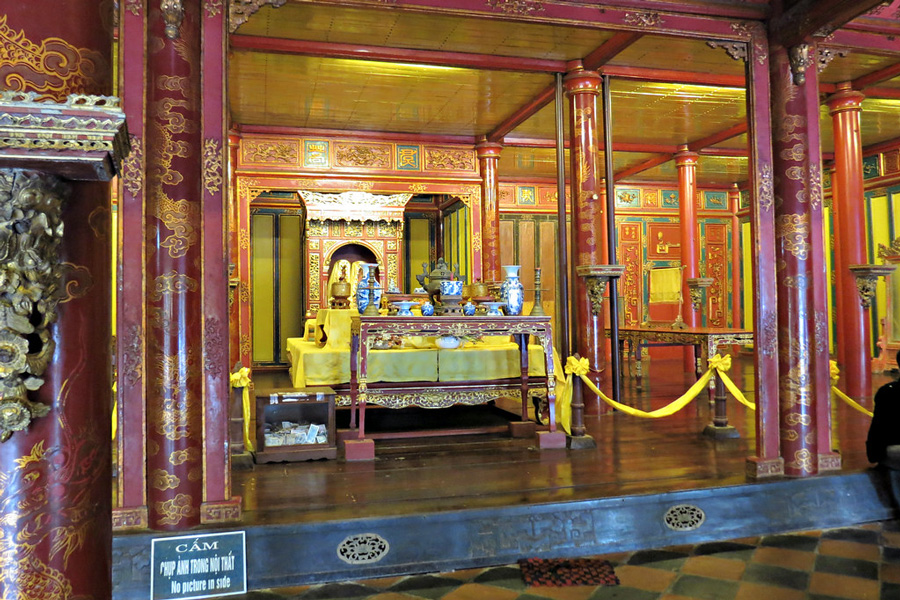
To reach Minh Mang Tomb in Hue, Vietnam, visitors have several transportation options. The nearest airport is Phu Bai International Airport (HUI), approximately 15 kilometers away, where taxis or private transfers can be easily arranged. If arriving by train, the Hue train station is well-connected to major cities, and from there, taxis or local buses can take you to the tomb, situated about 12 kilometers from the station. Long-distance buses also operate to and from Hue, with local transportation options available at the bus station. Taxis and motorbike taxis are convenient for short-distance travel within the city.
Additionally, guided tours offered by local travel agencies provide a comprehensive experience, often including transportation to Minh Mang Tomb as part of a broader itinerary covering other historical sites. Once near the tomb, visitors can utilize local transportation such as cyclos or electric shuttles to access the entrance gate. Planning the mode of transportation based on individual preferences and convenience ensures a seamless journey to explore the rich historical and cultural heritage of Minh Mang Tomb.
See more: Amazing Indochina 15 days/ 14 nights